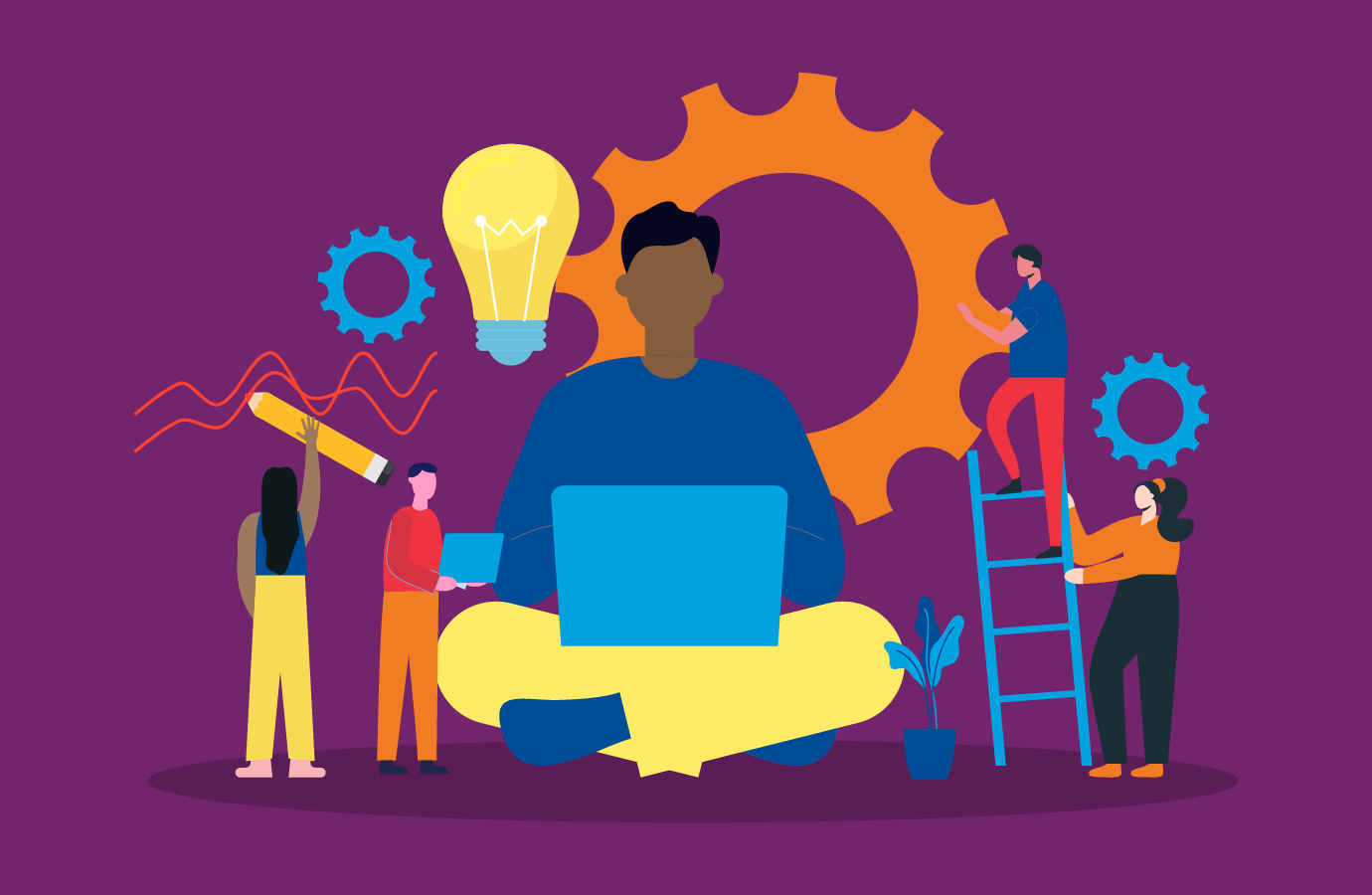Millennials, who have dominated the workforce for the past decade, are now ceding the stage to the next generation of employees – Generation Z. In this time of flux and change, leaders face the challenge of engaging and retaining Gen Z talent. Young workers have different expectations of organizations and leaders and can exercise their option to leave given their other global job opportunities. This issue is further complicated as leaders simultaneously try to maintain strong engagement in a hybrid work environment. Our new work environment requires increased communication, collaboration, and leadership participation.
Managing Gen Z Workers in a Hybrid Work Environment
Below are 5 insights on successfully managing Gen Z hybrid workers.

1. Understand Gen Z’s Values
Gen Zs are the new entrants to the workforce. These younger employees come with a different set of values, expectations, and behaviors than previous generations. They value flexibility, freedom, work-life integration, and ethical work practices. Therefore, one of the crucial things that employers must do is align their company values with Gen Z’s values. It’s imperative to listen to and learn from Gen Zs to foster a culture that values individuality and inclusivity. Leaders can ensure that Gen Z employees thrive in a hybrid work environment by tailoring their communication style to their unique preferences. This often means using more technology, planning impactful face-to-face meetings, and creating a safe space for them to share their ideas and suggestions.
2. Offer Authentic Work
Gen Z workers are partial to authentic work projects that contribute to society, are data-driven, and are innovative. With hybrid work arrangements, teams can work together to agree on shared goals that promote engagement, creativity, and collaboration. Managers can assign meaningful projects to Gen Zs that align with their passions and goals, resulting in a more committed and enthusiastic workforce. Many Gen Zers strongly desire to feel challenged and appreciated in their work, so providing ‘stretch’ assignments that push Gen Zs out of their comfort zone is a great way to tap into their creativity and innovation.
3. Optimize the Digital Experience
The pandemic has considerably shifted the nature of work and how workers view the importance of mental health and work-life balance. Even after the pandemic, remote work has remained, and Gen Z employees must navigate various digital tools effectively. Hybrid work arrangements offer the perfect opportunity to introduce training programs that engage Gen Z employees in digital upskilling. They are digital natives, so companies should ensure that employees who work remotely have access to the latest digital tools, platforms, and technologies. This helps employees to work efficiently and improves collaboration across teams.
4. Promote Autonomy and Flexibility
Compared to other generations, Gen Z employees are accustomed to a society that provides easy access to information and has a short attention span. Younger workers value the ability to work autonomously, be flexible, and control their own working hours, which is a big reason why fully remote work is so attractive to them. Remote jobs offer flexibility, and Gen Z who work from home are known for their ability to complete tasks more efficiently than their counterparts. Given this, leaders should focus on delivering projects within specified timelines and requirements and allow for input and experimentation to consider alternative ideas and approaches to achieving the desired outcomes.
5. Tailor Employee Recognition
Organizations and leaders must acknowledge and utilize innovative techniques for recognizing Gen Z employees’ hard work. Often, traditional awards and recognition programs are lackluster and don’t motivate younger generations. Leaders must understand the unique characteristics of the Gen Z workforce to offer the most authentic and valued recognition, rewards, and support. This includes tailored compensation plans, public recognition, and unconventional incentives such as learning stipends, donations, and mentorship opportunities.
A Final Thought
Gen Z employees bring a fresh perspective to their work and a new set of professional goals compared to older generations. Leaders must be flexible enough to adjust to their unique needs in a hybrid work environment, where working from home is the norm. Creating a work culture that is flexible, values autonomy, and fosters innovation and creativity is crucial to retaining Gen Z employees. Organizations must evolve and adopt innovative ways of engaging employees to promote a culture of learning and recognition that resonates with Gen Zs. By embracing these techniques, leaders stand to gain a committed and motivated workforce that will drive their organizations to exceptional growth and success.
Optimus SBR’s Learning & Development Practice
At Optimus SBR, we know first-hand that building a great team is about attracting, retaining, and engaging top talent. We partner with clients to create scalable, targeted, experiential learning programs that enhance people leadership, employee engagement, team collaboration, and performance results.
If you’re a leader looking for a program to help Gen Z employees navigate the hybrid work environment, please feel free to connect and learn more about opportunities to partner with us.
Giselle Kovary, Head of Learning & Development Practice
learning@optimussbr.com

Optimus SBR Celebrates 6 Consecutive Wins as 2024 Best Workplaces™ in Professional Services
Our commitment to a people-first approach has been central to being recognized in 2024 for the sixth time as one of the Best Workplaces™ in Professional Services and the key to our overall success.

12 Best Practices to Increase Cross-Team Collaboration and Enhance Organizational Alignment
Enhancing cross-team collaboration drives innovation, optimizes resources, improves overall performance, and ensures every part of your organization works toward the same goals.

Enhancing Your Data Strategy for Success: The Power of Metadata
Metadata goes beyond just aiding in data retrieval. It ensures your data is secure, compliant and, most importantly, understood consistently by everyone in the organization.

Optimizing Language Translation Strategies: Beyond Compliance to Enhanced Operational Efficiency
The introduction of Quebec’s Bill 96 in Canada underscores the necessity for comprehensive translation strategies. Integrating machine translation technologies helps meet regulatory requirements while enhancing translation speed, cost efficiency, and operational effectiveness.

How to Manage Gen Z: 16 Strategies to Engage and Retain Young Talent
These practical strategies lead to a workplace that is better aligned with the values and expectations of Gen Z employees, ensuring that your efforts to attract and retain Gen Z talent are both successful and sustainable.

How to Measure the Success of Learning and Development: 12 Important Metrics to Evaluate
Quantifying the success of L&D training programs can be challenging. Learn about selecting and measuring the right metrics to determine whether your training efforts are truly making an impact.



